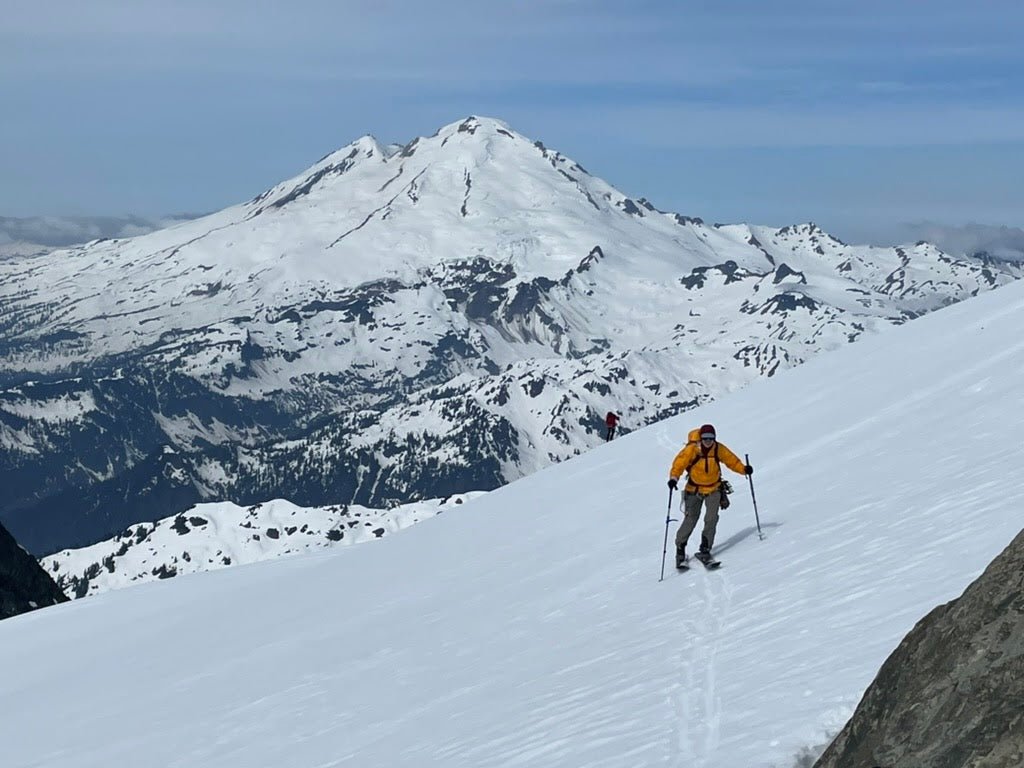Standing tall in the stunning North Cascades of Washington State, Mount Baker is a testament to the immense geological forces that have shaped our planet over millions of years. Rising to an elevation of 10,781 feet (3,286 meters), this majestic volcano is not only an iconic landmark but also a fascinating subject for geologists and nature enthusiasts alike. Join us as we embark on a journey to explore the geological wonders of Mount Baker.

- Formation and Tectonic Setting:
Mount Baker, also known as Koma Kulshan in the indigenous Lushootseed language, is a stratovolcano situated in the North Cascades Range of the Pacific Northwest. It is part of the Cascade Volcanic Arc, a chain of volcanoes extending from northern California to southwestern British Columbia, Canada. The Cascades were formed by the subduction of the Juan de Fuca tectonic plate beneath the North American plate, resulting in volcanic activity along the convergent boundary.
- Volcanic Activity and Eruptions:
Still an active stratovolcano, Mount Baker has a complex volcanic history spanning over 1.5 million years. Its eruptions have been characterized by explosive pyroclastic flows, lava flows, and occasional lahars (mudflows) triggered by melting glaciers during eruptions. The most recent significant eruption occurred in 1843, making Mount Baker one of the most active volcanoes in the Cascade Range.
- Glacial Sculpting:
Mount Baker features a heavily glaciated landscape. These glaciers have played a pivotal role in shaping the mountain's topography over thousands of years. The mountain hosts numerous glaciers, including the Easton, Squak, Deming, and Coleman glaciers. This impressive collection of ice, formed from the accumulation and compaction of snow. The glaciers on Mount Baker used to be apart of a much larger ice sheet that is responsible for the jagged edges of the Cascade Mountains.
- Geological Composition:
Although this volcano exhibits some basaltic and rhyolitic compositions, Mount Baker, is predominantly composed of andesitic and dacitic lavas, . These lavas are associated with explosive volcanic activity, producing volcanic ash, pumice, and pyroclastic flows. The diverse composition of the mountain indicates a diverse range of magma sources and eruptive styles over time.
- Hydrothermal Features:
The geothermal activity within Mount Baker contributes to the presence of hot springs and fumaroles, adding to the mountain's unique geological character. These hydrothermal features arise from heated groundwater circulating near the volcano's magma chambers. They not only provide vital habitats for unique microbial life but also create colorful mineral deposits, such as sulfur and iron oxide, which enhance the visual allure of the area. You'll know you're getting closer to the summit when you get whiffs of sulfur as you climb!

Mount Baker is an extraordinary geological wonder, shaped by volcanic eruptions, glacial processes, and ongoing tectonic activity. Its breathtaking beauty and scientific significance make it a compelling subject for researchers, outdoor enthusiasts, and admirers of natural landscapes. Understanding the geology of Mount Baker not only deepens our knowledge of Earth's dynamic processes but also enhances our appreciation for the forces that have shaped and continue to shape our planet.
Whether you are standing at its foothills or exploring its glaciated slopes, Mount Baker provides an awe-inspiring glimpse into the Earth's geological history.

